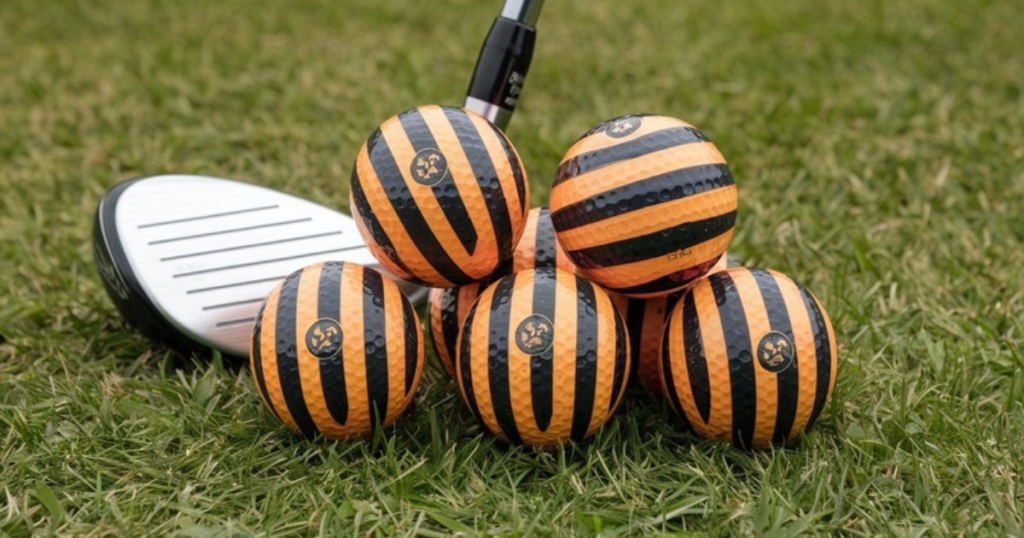Golfers of all levels understand that finding the right ball can be the difference between an average game and a stellar performance.
However, not all golf balls are created equal, and one key factor that dramatically affects your choice is swing speed. Choosing the correct golf ball by swing speed helps you optimize distance, control, and overall game precision.
Swing speed refers to how fast the club head is traveling when it hits the ball, and this plays a crucial role in determining which golf ball is best suited for your game.
This guide will explore the essential aspects of matching your golf ball to your swing speed, covering everything from ball compression to distance and control.
Understanding Swing Speed
Your swing speed is one of the most crucial metrics in the game of golf. It defines not only how far the ball will travel but also how much control you’ll have over it.
Swing speed varies between players, with professional golfers often reaching speeds of 110-125 mph, while amateur players usually fall within the 70-95 mph range.
Matching your ball to your swing speed can ensure that you’re maximizing distance while maintaining control over the flight and spin of the ball.
Golf Ball by Swing Speed Chart
A golf ball-by-swing speed chart is an incredibly helpful tool. It enables golfers to categorize which type of golf ball they should use based on their unique swing speed. A typical chart breaks down speeds into ranges like:
- 80 mph and below: Low-compression balls for a softer feel and better distance.
- 85-95 mph: Medium-compression balls for a mix of distance and control.
- 100+ mph: High-compression balls for greater energy transfer and spin control.
These general guidelines will help you find the right ball to optimize your game.
Golf Ball Distance by Swing Speed
The relationship between golf ball distance and swing speed is significant. The higher your swing speed, the more potential energy is imparted to the ball, resulting in more distance.
For players with faster swing speeds, high-compression golf balls that require more force to compress are best.
Conversely, players with slower swing speeds benefit from low-compression balls, which compress more easily, giving them a better chance at achieving longer distances.
For example, a player with a 90 mph swing speed will achieve better distance with a medium-compression ball, while a player with a 100 mph swing speed will see more success with a high-compression ball that allows for maximum energy transfer.
Longest Golf Ball by Swing Speed
If you’re searching for the longest golf ball by swing speed, it’s essential to understand how ball technology has been designed to complement different swing speeds.
For fast swingers (100 mph and above), balls such as the Titleist Pro V1x or Bridgestone Tour B X can yield impressive distances due to their high compression cores and aerodynamic dimple patterns.
For medium and slow swingers, brands like Callaway Supersoft or Srixon Soft Feel deliver excellent results by providing softer cores that increase energy efficiency at lower speeds.
These balls allow players to maximize their distance even with less powerful swings.
Golf Ball Testing by Swing Speed
Before settling on a specific ball, it’s essential to perform golf ball testing by swing speed.
This process involves testing multiple golf balls on the course or with a launch monitor to measure metrics such as ball speed, launch angle, spin rate, and overall distance.
By testing different balls in various playing conditions, you’ll get an accurate idea of which ball works best with your swing speed.
Titleist Golf Balls by Swing Speed
Titleist is a leader in producing premium golf balls for all levels of play. If you’re swinging at 90 mph or above, the Pro V1x is one of the best choices for distance and spin control.
For slower swingers, Titleist’s Tour Soft offers better performance with a softer feel, ensuring you don’t sacrifice distance or control.
Bridgestone Golf Balls by Swing Speed
Bridgestone is known for its scientifically engineered golf balls.
The Tour B RX is designed for swing speeds under 105 mph, providing an incredible combination of distance and soft feel.
On the other hand, faster swingers will appreciate the Tour B XS, which enhances ball speed and distance with a firmer feel.
Callaway Golf Balls by Swing Speed
Callaway delivers an impressive range of balls that cater to various swing speeds. For medium swing speeds of 90-95 mph, the Callaway Chrome Soft offers excellent control and distance. For slower swing speeds, Callaway Supersoft delivers top-tier performance by offering a lower compression for more forgiving results.
Best Golf Ball by Swing Speed: Tailored Solutions
Choosing the best golf ball by swing speed is crucial to optimizing your game. For those with swing speeds in the 95-100 mph range, high-compression balls such as the Pro V1x or Callaway Chrome Soft X are perfect for maintaining distance while providing superior control.
For slower swingers around 80 mph, balls like the Bridgestone e12 Contact or Srixon Soft Feel provide excellent performance by compressing more easily for better distance and control.
Golf Ball Compression Chart by Swing Speed
A golf ball compression chart matches your swing speed to the ball’s compression rating.
Lower compression ratings (typically below 70) are best for swing speeds under 85 mph, while higher compression (90+) is ideal for faster swings.
The goal is to find the right compression to ensure maximum energy transfer, providing optimal distance without losing control.
Golf Ball Swing Speed Compression
The concept of golf ball swing speed compression revolves around the ability of the ball to compress at impact.
If you have a slower swing speed, a ball with lower compression will compress more on impact, ensuring better distance.
If you have a faster swing speed, a high-compression ball is necessary to maximize distance and control without losing energy during impact.
Conclusion
In summary, selecting the right golf ball by swing speed is crucial to improving your performance on the course. Whether you have a fast, medium, or slow swing speed, there is a golf ball specifically designed to match your style of play. Take the time to test various golf balls based on your swing speed, compression, and desired distance to find the perfect fit. With the right ball, you’ll experience improved distance, accuracy, and overall game performance.
FAQs
1. What is the best golf ball for a 100 mph swing speed? For a 100 mph swing speed, high-compression golf balls like the Titleist Pro V1x or Bridgestone Tour B XS are ideal. These balls are designed to optimize distance and spin control for faster swingers.
2. How does swing speed affect golf ball choice? Swing speed determines how much energy is transferred to the ball. A higher swing speed benefits from a high-compression ball, which requires more force to compress and releases more energy. Lower swing speeds need low-compression balls for better distance.
3. Can I use the same ball for different swing speeds? While it’s possible, it’s not ideal. Golf balls are engineered to suit specific swing speed ranges. Using a ball that doesn’t match your swing speed can result in reduced distance, control, and overall performance.
4. What is a golf ball compression chart? A golf ball compression chart matches swing speed to the compression rating of a golf ball, helping players choose the correct ball for optimal energy transfer and performance.
5. Are there golf balls specifically for slower swing speeds? Yes, balls like the Callaway Supersoft or Srixon Soft Feel are designed for slower swing speeds, offering better compression, distance, and control for slower swingers.



